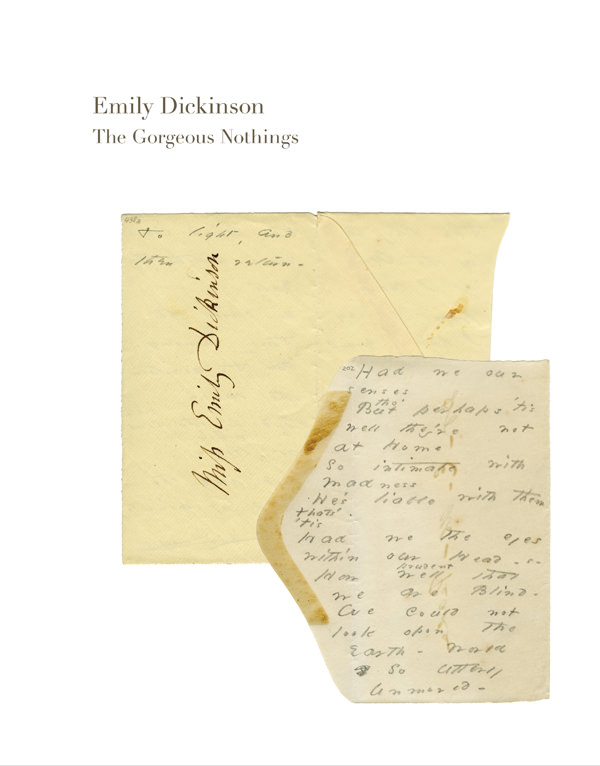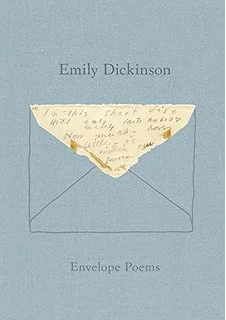Emily Dickinson: The Gorgeous Nothings
"For Proust, a fragment is a morsel of time in its pure state; it hovers between a present that is immediate and a past that once had been present." —Susan Howe, Preface, The Gorgeous Nothings
"By homely | gifts and | hindered Words | the human | heart is told | of nothing — | 'Nothing' is | the force | that renovates | the World —" —Emily Dickinson
The Complete Fragment
In The Gorgeous Nothings, Emily Dickinson's envelope poems can be admired not only for their poetic splendor, but also for the aesthetic subtlety of their canvas. One can imagine Dickinson intentionally unfolding her envelopes, preparing them for whatever chain of words would seem to fall in succession. Jen Bervin and Marta Werner's compilation of the envelope writings provide the reader with an intimate glimpse of the workings of Dickinson's poetry.
Though considered fragments in contrast to Dickinson's 1,800 "finished" poems that have been compiled into various editions after her death, these poems do convey a finality and intention. Perhaps what makes these fragments, then, is their canvas. The reused envelopes—scraps—seem inseparable from the words. The shape of the envelopes certainly acted upon the words as Dickinson scrawled across the paper. Words are broken by syllable more frequently here—lines enjambed by space rather than by choice. Dickinson's poetry has always defied traditional printing, but these poems in particular are inextricably tied to their canvas.
Envelope as Canvas
In the essay "The Wheels of Birds," editor Marta Werner recounts her accidental discovery of a fragment that slipped free from one of Dickinson's envelopes. She compares the visual aspect of the poem, with its wing-like features, to the poem's word-image of birdsong bringing a close to the day:
Werner goes on to reveal that the pin holes located in the bottom middle were left from an additional paper that contained "a verb from the vocabulary of falconry." The insight transforms this fragment into part of a collage. The need for rotating the paper to read the full text, as Werner writes, adds an element of movement to this seemingly flying poem.
The book itself is also a work of art. In addition to essays that enlighten the reading of the poems, the book includes a visual index compiled by Jen Bervin. Thumbnails of the poems are grouped according to different categories, such as Index of Envelopes with Cancelled or Erased Text, or Index of Envelopes with Multidirectional Text. Bervin's introduction highlights the feature of Dickinson's work that responded to the "compositional space." Of the roughly 1,400 poem drafts available for selection, Bervin explains that they chose those that emphasized Dickinson's "experiments with visual form."
The Envelope Poems
In The Gorgeous Nothings, each poem is presented in their actual size. A transcription is also provided. A sample of the transcription is provided below. All additional images are sourced from The Emily Dickinson Archives, an open access database of Dickinson's poems.
Additional Resources
For more information regarding Emily Dickinson's history of publication and the Emily Dickinson Archives, read Noble Oceans' "Emily Dickinson: Poetic Gesture."
Consider pairing The Gorgeous Nothings with a pocket-sized adaption of the original book. Envelope Poems, by Jen Bervin and Marta Werner, includes images and transcriptions of the poems, though without the essays from The Gorgeous Nothings.
*Frontispiece
Emily Dickinson's "There are those" circa last decade [date assigned by Thomas H. Johnson]; The Gorgeous Nothings (Werner and Bervin)







